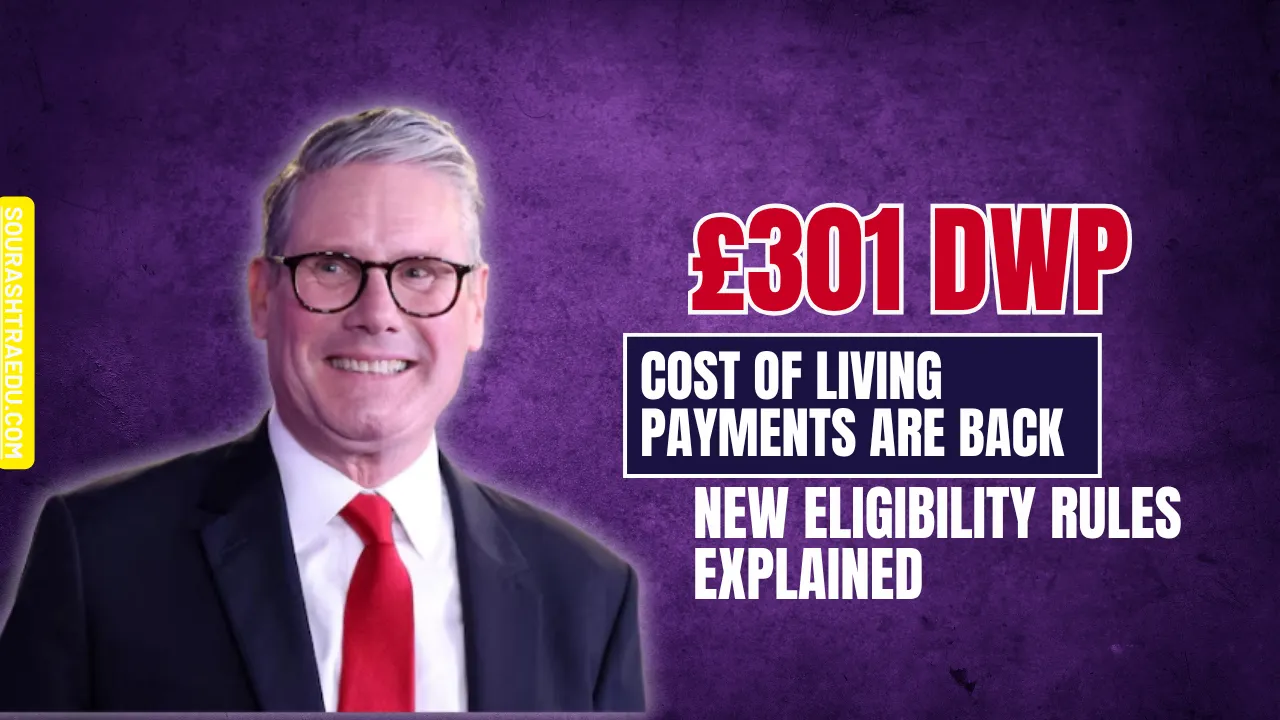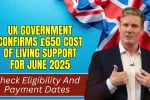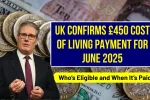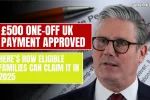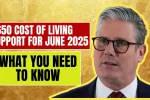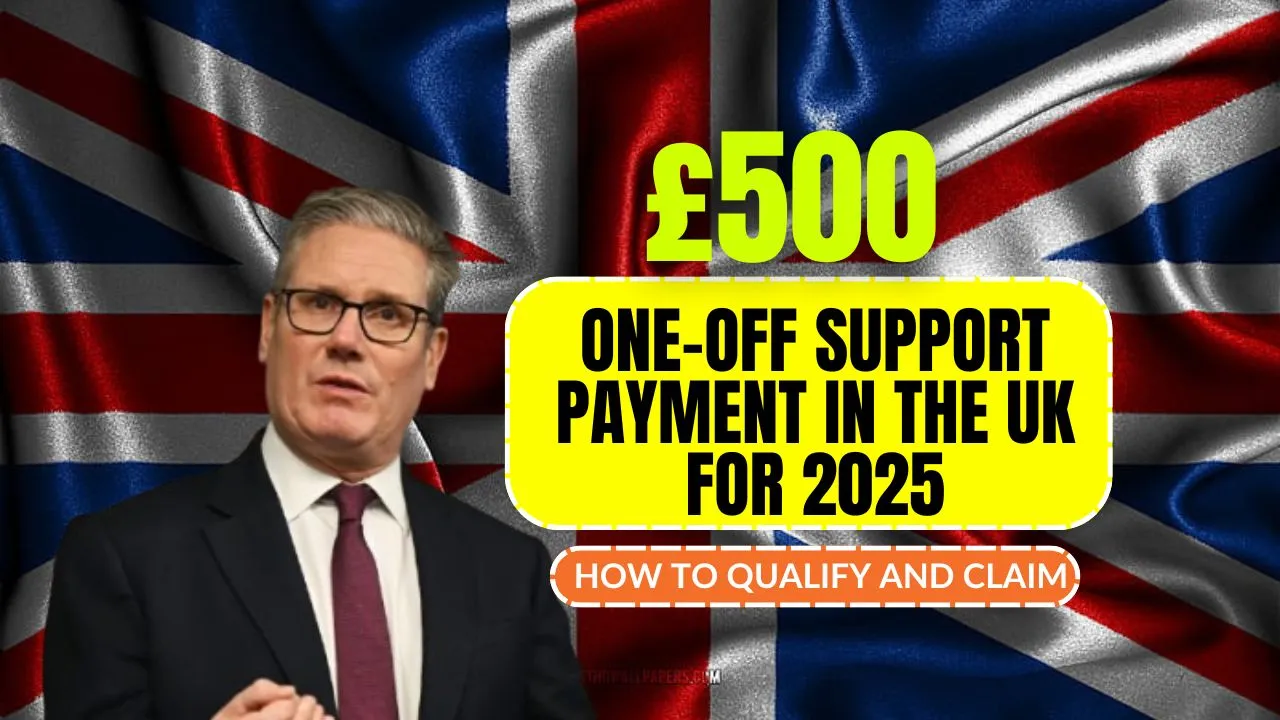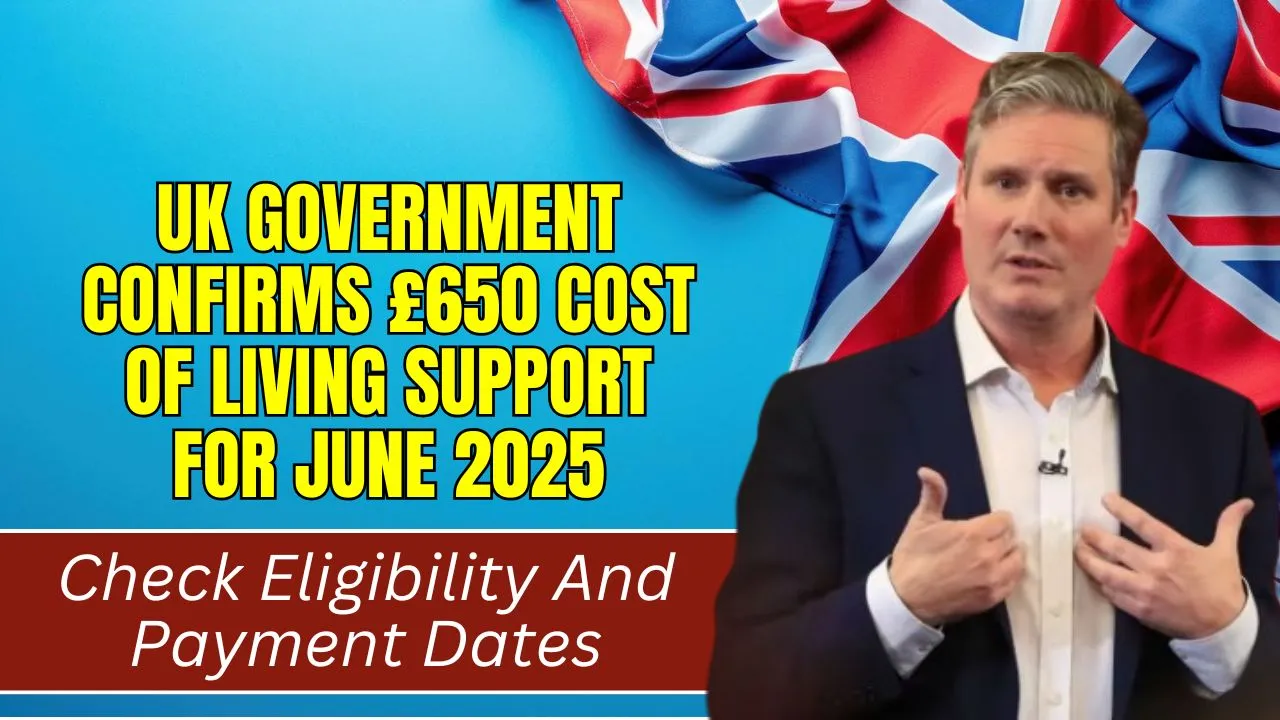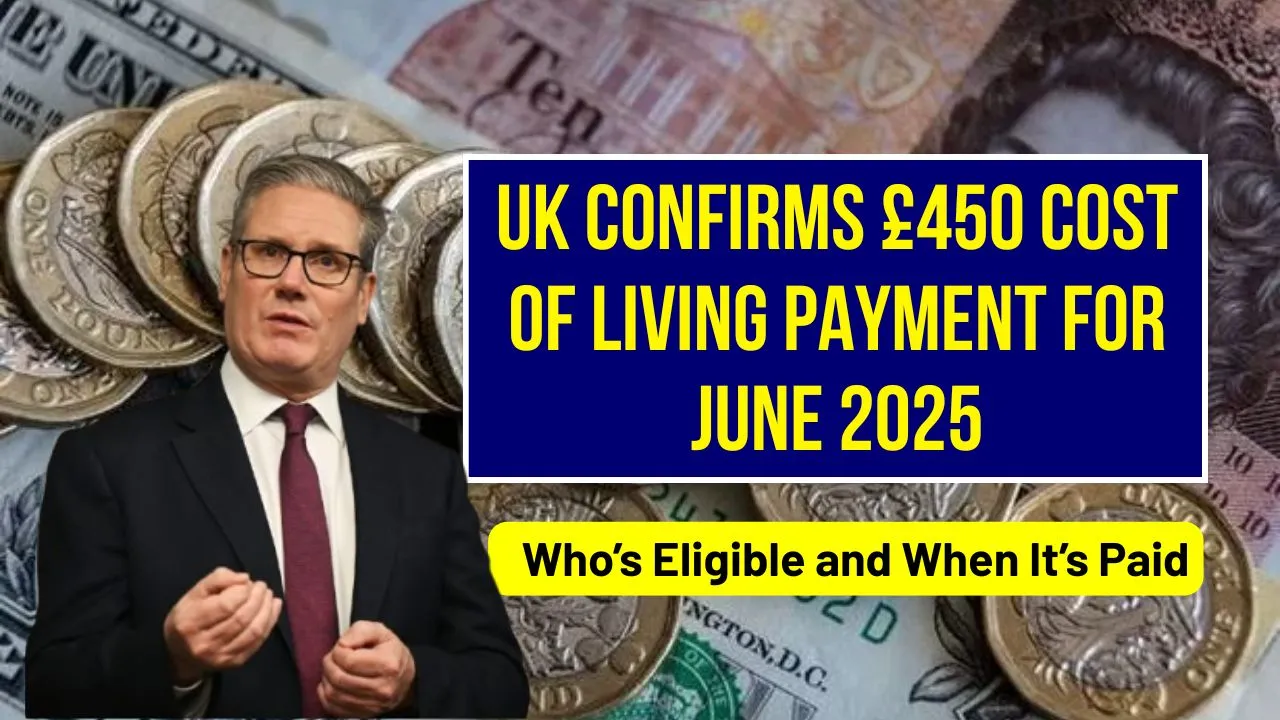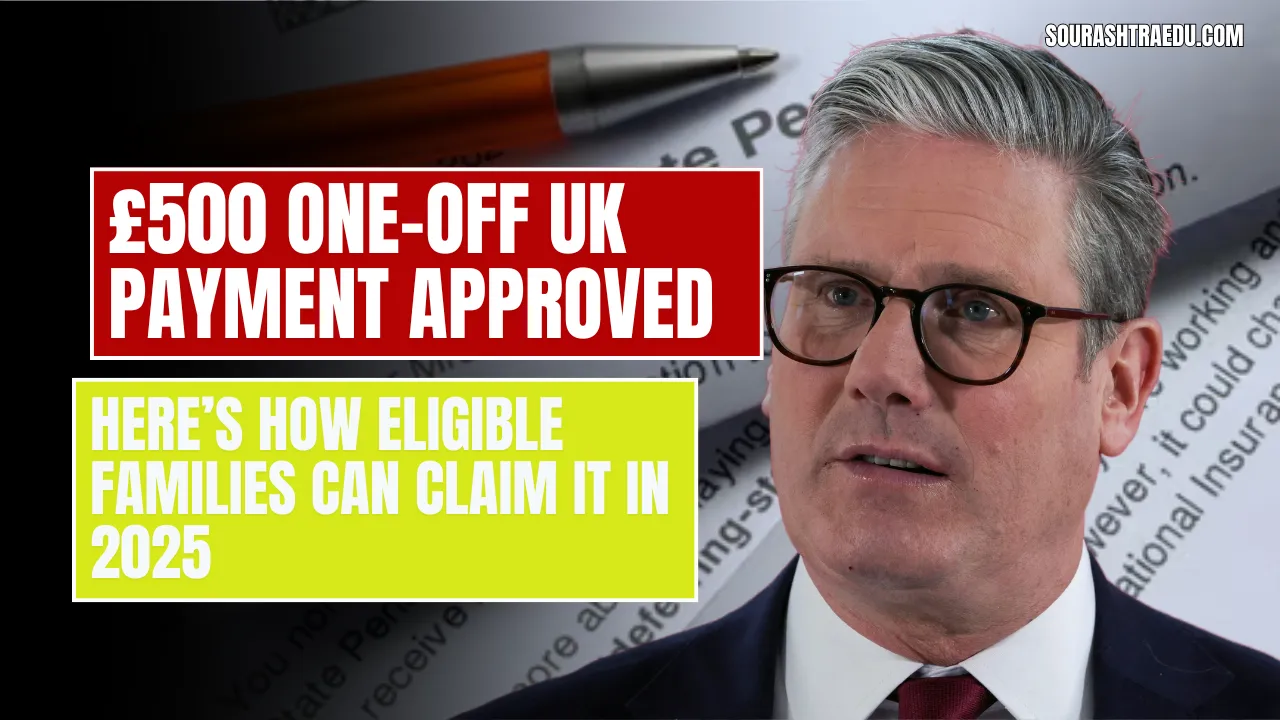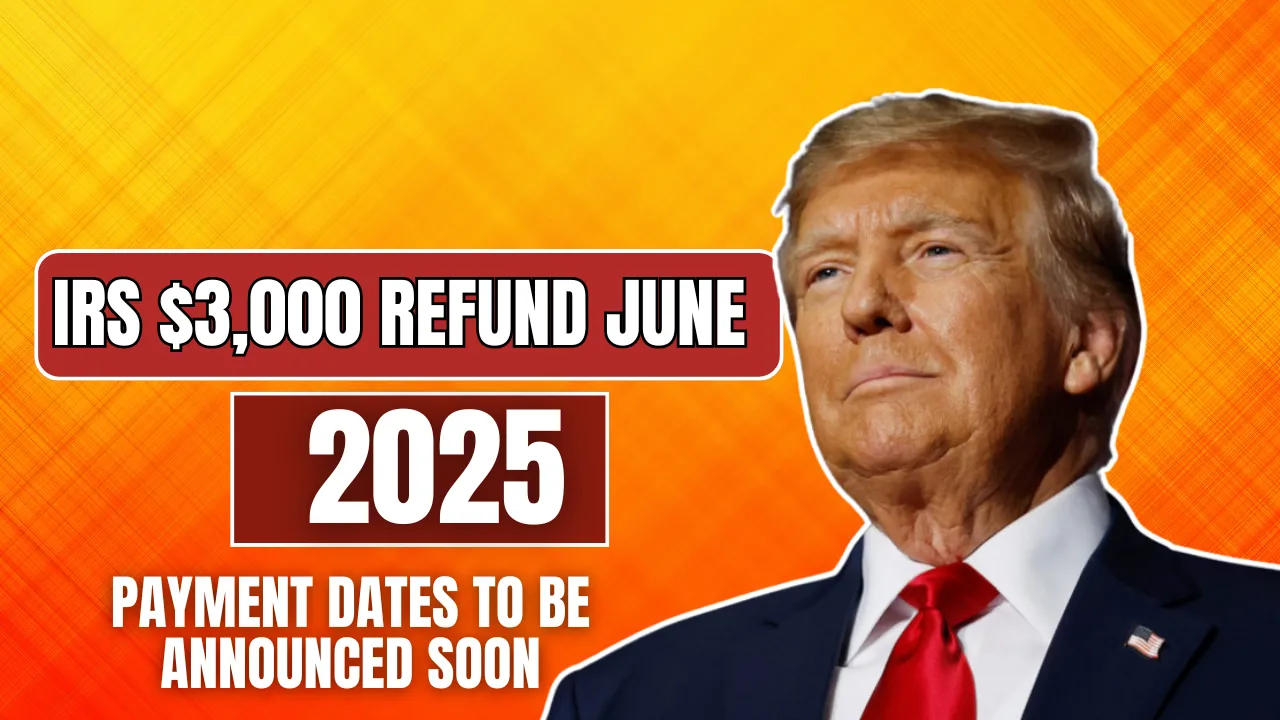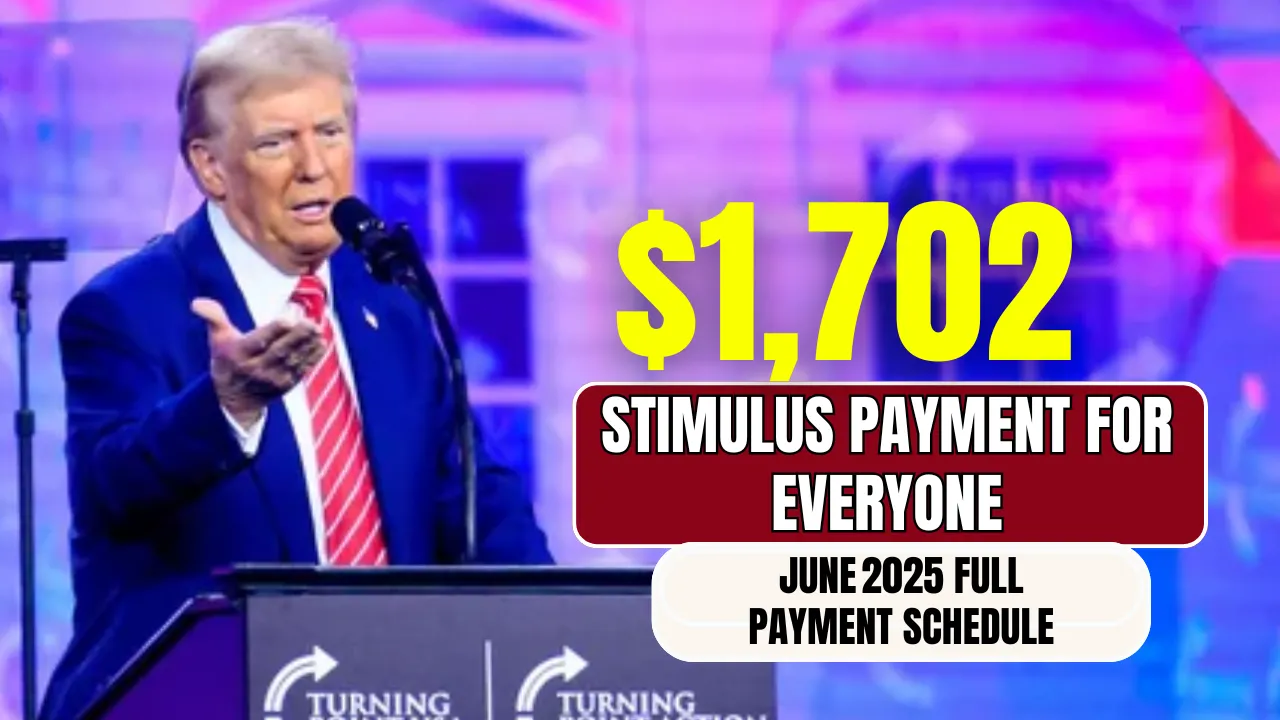Rising household expenses across the UK have pushed families into tighter financial corners than ever before. In response, the UK government is reintroducing Cost of Living Payments for 2025, with a set amount of £301 to be paid out in multiple installments. This initiative aims to ease the burden on those most affected by inflation, high energy prices, and growing uncertainty.
The restructured support plan, while retaining the core objective of providing direct aid to low-income households, now features updated eligibility windows and improved targeting mechanisms. With millions potentially qualifying, it’s important to understand who gets it, when, and what’s new in this year’s distribution plan.
Cost of Living Payments
The Cost of Living Payments in 2025 are part of a broader package by the Department for Work and Pensions (DWP). Unlike previous years, where different payment amounts were issued, the government has decided to keep it consistent at £301 for each round. This decision reflects a focus on fairness, simplicity, and efficient delivery of support to those most in need.
The payment is aimed specifically at people who are already receiving income-related benefits. It’s automatic, which means there’s no paperwork or application process required—making it easier for recipients to access the funds promptly and securely.
Overview Table
| Detail | Description |
| Payment Amount | £301 per installment |
| Total Installments in 2025 | Three |
| Who Qualifies | Claimants of Universal Credit, Pension Credit, Tax Credits, etc. |
| Application Process | No application needed – automatic payment |
| Expected Disbursement Windows | April–June, August–September, November–December |
| Payment Reference in Bank Statement | “DWP COL” or “HMRC COL” |
| Exclusions | Contribution-based ESA/JSA, nil awards, new-style benefits |
| Extra Support | Disability and pensioner payments, local council hardship funds |
Understanding the £301 DWP Cost of Living Payments
The government has a history of issuing support in different formats during times of economic challenge. In previous years, these included amounts such as £650 or £900. For 2025, the fixed amount of £301 per payment ensures a stable and predictable form of aid. It simplifies the system and allows beneficiaries to better plan their expenses over time.
The DWP has also fine-tuned how they assess eligibility, focusing on accurate snapshots of income support during specific windows. This update aims to eliminate past issues and ensures that resources go to households that genuinely need help.
What’s New in 2025?
One of the major changes is the revised qualifying periods. These new windows will better reflect the real-time financial status of applicants, making sure the aid is provided to those currently in need. These changes are expected to tighten the process and reduce payments to those who may no longer fall within the intended scope of the scheme.
This year’s plan also promises faster turnaround times and more clarity for recipients. With clear timelines and no paperwork involved, the 2025 Cost of Living Payments aim to be both timely and transparent.
Who Qualifies for the £301 DWP Cost of Living Payments?
You are likely to qualify for these payments if you receive:
- Universal Credit (excluding zero awards caused by income or deductions)
- Pension Credit
- Income-based Jobseeker’s Allowance (JSA)
- Income-related Employment and Support Allowance (ESA)
- Income Support
- Working Tax Credit or Child Tax Credit (administered by HMRC)
People receiving only contribution-based benefits or those whose claims were started after the eligibility windows may not qualify. It’s also critical to ensure that your bank and contact details are up to date with DWP or HMRC to avoid payment issues.
Payment Structure and Expected Dates
While final confirmation from DWP is still pending, the expected payment schedule based on past years is as follows:
- First installment: April to June 2025
- Second installment: August to September 2025
- Final installment: November to December 2025
Payments are sent directly into recipients’ bank accounts with a reference that typically includes “DWP COL” or “HMRC COL.” This helps individuals identify the payment easily and verify it’s been received.
Do You Need to Apply?
One of the best aspects of these Cost of Living Payments is that there’s absolutely no need to apply. The payments are processed and issued automatically based on benefit records and qualifying dates. This avoids extra paperwork and allows the process to move swiftly without overburdening the system.
Who Might Not Receive It?
Even if you think you qualify, you may not receive the payment if:
- Your Universal Credit was reduced to a nil award
- You’re only receiving contribution-based or new-style ESA or JSA
- Your claim began after the designated qualifying period
- Your contact or banking information on file is outdated or incorrect
It’s essential to keep your records current and review eligibility carefully. If something doesn’t look right, there are ways to follow up.
Haven’t Received Your Payment?
If you’re confident you qualified but didn’t get your payment:
- Check your bank statement for “DWP COL” or “HMRC COL”
- Log into your account on the DWP or GOV.UK website
- Submit a missing payment form if needed
- Call the DWP helpline for personalized assistance
Be sure to avoid third-party websites or offers that ask for payment or personal data—only trust official government channels.
Additional Financial Support Options
Aside from the £301 Cost of Living Payments, other forms of financial support are also being offered:
- £300 Pensioner Payment: For those who qualify for the Winter Fuel Payment
- £150 Disability Payment: For people on qualifying disability benefits
- Local council support: Including food vouchers, rent help, and energy bill assistance
Combining multiple sources of support can provide significant relief during difficult financial periods.
Why the £301 DWP Cost of Living Payments Matter
These payments play a crucial role in helping households handle rising costs. With inflation, fuel, and grocery bills remaining high, even a single £301 payment can help cover a critical expense. More importantly, it gives people room to breathe and some control over their financial planning.
It also shows that the government is responsive to the ongoing pressures many UK residents face. Regular reviews and updates to benefit schemes like this ensure that public funds are used effectively and fairly.
Final Thoughts
The return of the Cost of Living Payments in 2025 is more than a temporary relief measure—it’s a vital component of financial stability for millions. With automatic disbursements, clearer eligibility rules, and a streamlined structure, these payments are designed to be simple and impactful.
If you or someone you know is eligible, make sure your benefit records are current and keep an eye out for payment alerts. And if there’s a problem, take action early. In uncertain times, every bit of support helps.
